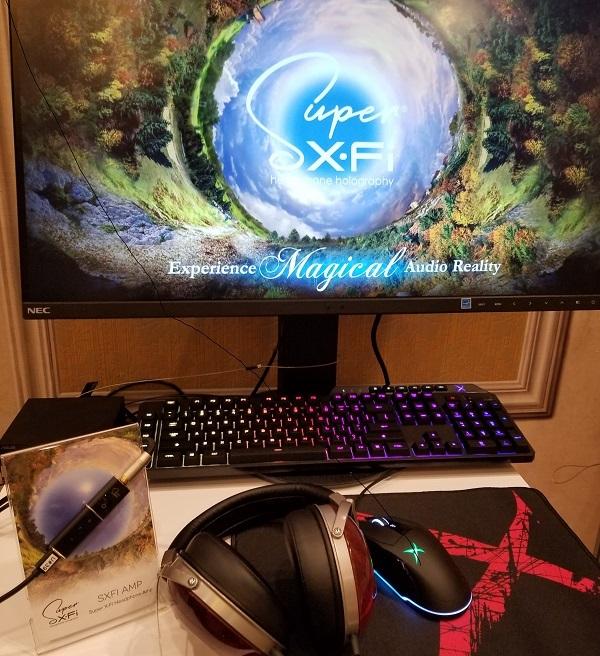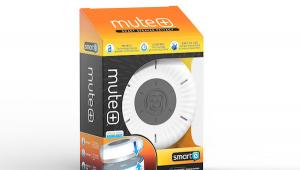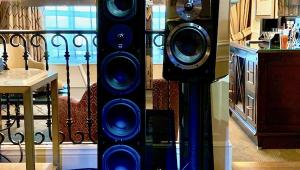Creative Wows with Super X-Fi Headphone Holography

Companies have been attempting to produce 3D sound for decades but have failed to make an accurate, realistic sound. Creative just unveiled the latest version of their Super X-Fi (SXFi) incorporated into headphone amp/dongle and accompanying app and it’s a game-changer.
What does it do? Creative describes it best: “Unlike standard headphone audio, where sound is pumped directly into your ears, giving you claustrophobic audio trapped inside your head, Super X-Fi will let you feel as if you were listening to audio coming from the outside world naturally, and your headphones disappear.”
Normally, I would put this down as marketing hype, but it truly does exactly that. It creates the illusion of sound coming from speakers instead of from the headphones. I’ll discuss the setup process in a minute, but during the demo, a room full of people first listened to a 7.1 movie segment on speakers throughout the room. A little while later, we all listened to headphones set up with Super X-Fi. One by one, almost all of us slipped off the headphones, convinced that the sound was coming from the speakers. Astonishingly, it was coming from the headphones.
Super X-Fi isn’t just for surround sound. It creates a beautiful, full sound from stereo and even mono sound sources. But it doesn’t give it that artificial, gimmicky sound that other surround simulator programs have.The difference is that the system takes 7.2 or 5.1 multi-channel signals and reproduces them with realistic and accurate playback for surround sources. However, instead of monkeying with stereo or mono sound, the algorithm places the signal where it would be if being played back on a stereo system. So instead of coming from “within” the listener’s head, the sound appears to come from speakers placed a few feet away.
So, what was involved in creating this magic? The set-up wasn’t simple, but it was worth it. For this demo, we had the most optimized experience. First, our ears and facial features were mapped by taking 3 pictures of our heads. This part of the process is the same that consumers will use at home. Then, we were escorted into a listening room setup for 7.1 playback, and used calibration microphones mounted on earphones while listening to tones played back through the speakers throughout the room. Using the maps of our heads, our placement within the room, and the playback characteristics of the headphones we were using, our ideal playback environment was created.
As of today, the system will create a generic listening room for all users, but the lucky few of us who demoed it at CES can select the listening room we tested it in here. However, in the future, unique rooms can be mapped and recreated and accessed by everyone. Imagine listening to the Beatles in Abbey Road?
Currently the system is optimized for Android, Windows PC, gaming systems, and Mac OS, but a workaround adapter is available for Apple iPhone users. Users can also share the app with a friend, but it will only be available to use on sources stored on the phone. Users will be able to select from a growing list of headphones optimized for the app.
The SXFI Amp is available now for $150. Money well spent for anyone who regularly listens to movies through headphones.
















































